Italian Argentine
| ||||||||||||||||
| Total population | ||||||||||||||||
|---|---|---|---|---|---|---|---|---|---|---|---|---|---|---|---|---|
|
16,430,000
38.5% of Argentina's population | ||||||||||||||||
| Regions with significant populations | ||||||||||||||||
|
Throughout Argentina (Plurality in the Pampas) | ||||||||||||||||
| Languages | ||||||||||||||||
| Rioplatense Spanish, Italian and Italian dialects. | ||||||||||||||||
| Religion | ||||||||||||||||
| Roman Catholicism | ||||||||||||||||
| Related ethnic groups | ||||||||||||||||
| Italians, Italian Brazilian, Italian Chilean, Italian Mexican, Italian American, Italian Uruguayan, Italo-Venezuelans, Italian-Peruvian | ||||||||||||||||
An Italian Argentine (Spanish and Italian: italo-argentino) is a person born in Argentina of Italian descent or an Italy-born person who resides in Argentina. It is estimated up to 24 million Argentines have some degree of Italian descent (up to 60% of the total population), making it the largest ethnic group in the country.[1] Italians began arriving in Argentina in great numbers from 1857 to 1940, totaling 44.9% of the entire immigrant population; more than from any other country (including Spain at 31.5%), and this migratory flow continued to the early 1950s, with Italy also having the most emigrants to Argentina for the decades 1980–2000. Because of this, Italian descent is at least 60% of the population, almost 25 million.[1]
In 1996, the Italian Argentines were 15.88 million[2] when Argentina’s population was about 34.5 million, meaning that they were 46% of the Argentine population.
Italian settlement in Argentina, along with Spanish settlement, formed the backbone of today's Argentine society. Argentine culture has significant connections to Italian culture in terms of language, customs and traditions.[3]
History
.png)
Small groups of Italians started to immigrate to Argentina as early as the second half of the 17th century.[4] However, the stream of Italian immigration to Argentina became a mass phenomenon only in the years 1880-1920 during the Great European immigration wave to Argentina, peaking between 1900-1914; about 2 million settled between 1880-1920, and just 1 million between 1900-1914.[5] In 1914, the city of Buenos Aires alone had more than 300,000 Italian-born inhabitants, representing 25% of the total population.[5] In the decades pre-1900, Italian immigrants initially arrived mainly from the northern regions of Piedmont, Veneto and Lombardy; after the turn of the century however, with the rapid industrialization of the North, immigration patterns shifted to rural and overpopulated Southern Italy, especially Campania, Calabria and Sicily.[6] In Argentine slang, tano (from Napuletano, "Neapolitan") is still used for all people of Italian descent. The Italian immigrants were primarily male, between 14-50 and more than 50% literate; in terms of occupations, 78.7% in the active population were agricultural workers or unskilled laborers, 10.7% artisans, while only 3.7% worked in commerce or as professionals.[5] The outbreak of World War I and the rise of Fascism in Italy caused a rapid fall in immigration to Argentina, with a slight revival in 1923-27, but eventually stopped during the Great Depression and the Second World War.[7] After the end of World War II, Italy was reduced to rubble and occupied by foreign armies. The period 1946-1957 brought another massive wave of 380,000 Italians to Argentina.[8] The substantial recovery allowed by the Italian economic miracle of the 1950-60s eventually caused the era of Italian diaspora abroad to finish, and in the following decades Italy became a migration receiving country. Today, there are still 527,570 Italian citizens living in the Argentine Republic.[9]
Culture
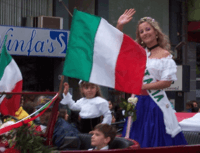
.jpg)
Language
According to Ethnologue, Argentina has more than 1,500,000 Italian speakers, making it the second most spoken language in the nation.[10] In spite of the great many Italian immigrants, the Italian language never truly took hold in Argentina, in part because at the time the great majority of Italians spoke especially their regional languages and not a lot the Italian language. This prevented any expansion of the use of the Italian language as a primary language in Argentina. The similarity of the Italian dialects with Spanish also enabled the immigrants to assimilate, by using the Spanish language, with relative ease.
Italian immigration from the second half of the 19th century to the beginning of the 20th century made a lasting and significant impact on the intonation of Argentina's vernacular Spanish. Preliminary research has shown that Rioplatense Spanish, and particularly the speech of the city of Buenos Aires, has intonation patterns that resemble those of Italian dialects (especially Neapolitan), and differ markedly from the patterns of other forms of Spanish.[11] This correlates well with immigration patterns as Argentina, and particularly Buenos Aires, had huge numbers of Italian settlers since the 19th century. According to a study conducted by National Scientific and Technical Research Council of Argentina, and published in Bilingualism: Language and Cognition (ISSN 1366-7289)[12] The researchers note that this is a relatively recent phenomenon, starting in the beginning of the 20th century with the main wave of Southern Italian immigration. Before that, the porteño accent was more similar to that of Spain, especially Andalusia.[13]
Much of Lunfardo arrived with European immigrants, such as Italians, Spanish, Greek, Portuguese, and Poles. It should be noted that most Italian and Spanish immigrants spoke their regional languages and dialects and not standard Italian or Spanish; other words arrived from the pampa by means of the gauchos; a small number originated in Argentina's native population. Most sources believe that Lunfardo originated in jails, as a prisoner-only argot. Circa 1900, the word lunfardo itself (originally a deformation of lombardo in several Italian dialects) was used to mean "outlaw". Lunfardo words are inserted in the normal flow of Rioplatense Spanish sentences. Thus, a Spanish-speaking Mexican reading tango lyrics will need, at most, the translation of a discrete set of words, and not a grammar guide. Tango lyrics use lunfardo sparsely, but some songs (such as El Ciruja, or most lyrics by Celedonio Flores) employ lunfardo heavily. "Milonga Lunfarda" by Edmundo Rivero is an instructive and entertaining primer on lunfardo usage.
Examples:
- Parlar - To speak (from the Italian parlare - to speak)
- Manyar - To know / to eat (from the Italian mangiare - to eat)
- Mina - Female (from the Italian femmina - female)
- Laburar - To work (from Italian lavorare - to work)
- Fiaca - laziness (from the Italian fiacco - weak)
- Chapar - (from the northern Italian dialect ciapar - to take)
- Estufo - (from the Italian stufo - bored)
- Buonyorno - (from the Italian buon giorno - good morning)
Between about 1880 and 1900, Argentina received a large number of peasants who arrived with little or no schooling in the Spanish language. As those immigrants strove to communicate with the local criollos, they produced a variable mixture of Spanish with Italian and Italian dialects. This pidgin language was given the derogatory name cocoliche by the locals. Since the children of the immigrants grew up speaking Spanish at school, work, and military service, Cocoliche remained confined mostly to the first generation immigrants, and slowly fell out of use. The pidgin has been depicted humorously in literary works and in the Argentine sainete theater, e.g. by Dario Vittori.
Cuisine
.jpg)

Argentine cuisine has been strongly influenced by Italian cuisine, the typical Argentine diet is a variation on the Mediterranean diet. Italian staple dishes like pizza and pasta are common. Pasta is extremely common, either simple unadorned pasta with butter or oil, or accompanied by tomato or bechamel-based sauce.
Pizza (locally pronounced pisa or pitsa), for example, has been wholly subsumed and in its Argentine form more closely resembles Italian calzones than it does its Italian ancestor. Typical or exclusively Argentine pizzas include pizza canchera, pizza rellena (stuffed pizza), pizza por metro (pizza by the meter), and pizza a la parrilla (grilled pizza). While Argentine pizza derives from Neapolitan cuisine, the Argentine fugaza/fugazza comes from the focaccia xeneise (Genoan), but in any case its preparation is different from its Italian counterpart, and the addition of cheese to make the dish (fugaza con queso or fugazzeta) is an Argentine invention.
Fainá is a type of thin bread made with chickpea flour (adopted from northern Italy). The name comes from the Ligurian word for the Italian farinata. During the 20th century, people in pizzerias in Buenos Aires, Rosario or Córdoba have commonly ordered a "combo" of moscato, pizza, and fainá. This is a large glass of a sweet wine called moscato (muscat), plus two triangular stacked pieces (the lower one being pizza and the upper one fainá). Pizza and faina are normally served together.
Nevertheless, the pastas (pasta, always in the plural) surpass pizzas in consumption levels. Among them are tallarines (fettuccine), ravioles (ravioli), ñoquis (gnocchi), and canelones (cannelloni). They are usually cooked, served, and consumed in Argentine fashion, called all'uso-nostro, a phrase of Italian origin.
For example, it is common for pasta to be eaten together with white bread ("French bread"), which is unusual in Italy. This can be explained by the low cost of bread and the fact that Argentine pastas tend to come together with a large amount of tuco sauce (Italian sugo), and accompanied by estofado (stew). Less commonly, pastas are eaten with a dressing of pesto, a green sauce based on basil, or salsa blanca (Béchamel sauce).
Sorrentinos are also a local dish with a misleading name (they do not come from Sorrento, but were invented in Mar del Plata). They look like big round ravioles stuffed with mozzarella, cottage cheese and basil in tomato sauce.
Polenta comes from Northern Italy and is very common throughout Argentina. And, just like polenta concia in Italy, this cornmeal is eaten as a main dish, with sauce and melted cheese.
Other dishes are milanesas (Its name derive from the original cotoletta alla milanese from Milan, Italy), or breaded meats. A common dish of this variety is the milanesa napolitana (the name comes from a restaurant that used to be in Buenos Aires, "El Napolitano"). Milanesa napolitana is an Argentine innovation despite its name and it consists of a breaded meat with cheese, tomatoes and in some special cases, ham on top of the meat.
The milanesa was brought to Argentina from Central European immigrants, its name reflecting the original Milanese preparation cotoletta alla milanese, which also inspired the wiener schnitzel.[14][15]
Pasta frola is a typical Argentine recipe heavily influenced by Southern Italian cuisine, also known as Pasta Frolla in Italy. Pasta frola consists of a buttery pastry base with a filling made of quince jam, sweet-potato jam or milk caramel (dulce de leche) and topped with thin strips of the same pastry, forming a squared pattern. It is an Argentine tradition to eat pastafrola with mate in the afternoon. The dish is also very popular in Paraguay and Uruguay. The traditional Italian recipe was not prepared with latticework as it is in Argentina, but with a lid pierced with molds in forms of heart or flowers.
The Argentine variant of ice cream (Spanish: Helado, Italian: gelato) is particularly popular in Argentine desserts. Its creamy texture is due to the large proportion of cream,[16] and flavors range from classical chocolate with almonds to Argentine Dulce de Leche to kiwi, wine or tangerine. Ice cream was again a legacy of the Italian diaspora.
Statistics
See also
References
External links
| |||||||||||||||||||||||||||||||||||||||||||||||||||||||||||||||||||||||||||||||||||||||||||||||||||||||||||||||||||||||||||||||||||||||||||||||||||||||||||||||||||||||||||||||||||||||||||||||||
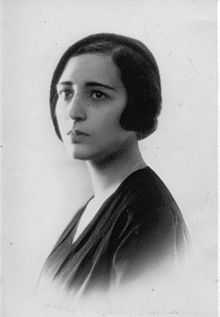
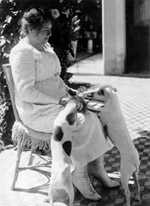
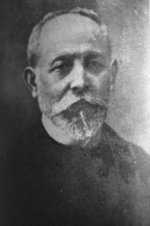
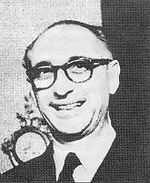
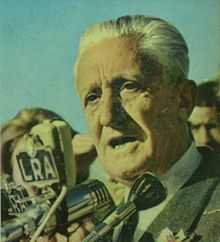
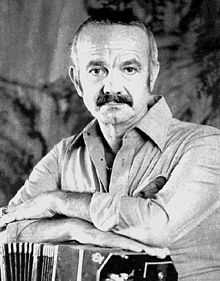

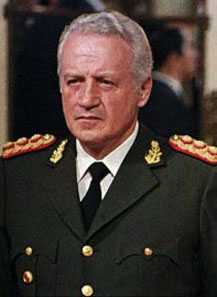





.jpg)

